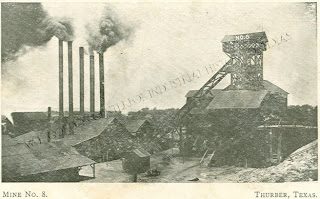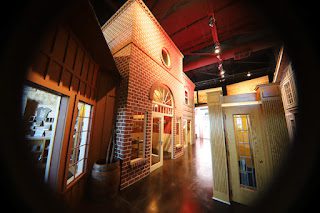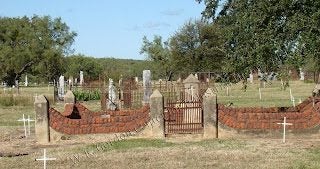The Dangers of Decorating

by: Lea Hart
One of the commonly mentioned topics within the historical interviews in the W.K. Gordon Center collections is Christmas time in Thurber. For instance, during Charles Boston’s interview he mentions how amazing the Drug Store’s upper floor was decorated for the holiday and how as children they would see the decorations and toys and “drool over those things.” It seems that Christmas time in Thurber was always highly anticipated. While some residents of Thurber did not celebrate Christmas, the vast majority did. Depending on the traditions of families who immigrated to Thurber, trees were either decorated early and left up until just after Christmas, or decorated by Santa on Christmas Eve after the children were in bed. Although the decorations likely brought smiles to children and adults alike, the twinkling lights and fragile ornaments could be dangerous.
First off, early tinsel was made of a mix of aluminum and lead until the FDA stepped in during the early 1970’s, well after Thurber’s closing. Despite the danger Americans decked their trees with handfuls of tinsel in addition to an assortment of ornaments. The rest of the decorations were usually handmade popcorn and paper chains, paper ornaments, fruits and nuts, pine cones, or, until the beginning of World War II, glass ornaments from Germany. Those who had their tree decorated by Santa often found smaller gifts throughout the tree as well as beneath it. Leading up to WWII German ornaments became less popular as anti-German sentiment grew in the United States. Upon this realization businessman Max Eckhardt went to a Corning Lightbulb manufacturer and pitched the idea of making Christmas ornaments. These new American-made ornaments used thinner glass and were coated in aluminum to help them shine brighter until war rationing ended the practice, leading to ornaments that resemble those we use today.

Christmas trees during the early 1900s.
Image Courtesy: Library of Congress, Harris and Ewing Collection
Early Thurberites lit their trees with candles secured on branches. More affluent residents used candleholders, while those who could not afford such luxuries punched holes in tin cans to let the candlelight shine though. Until the 1930’s, artificial trees were made of combustible feathers while real trees became flammable as they dried. Christmas lights as we know them did not come about until 1903 when General Electric began selling pre-wired Christmas lights which had round bulbs and oversimplified “how to” directions. These strung together lights were extremely expensive and not as safe as most of today’s lights due to the wire’s cloth covering. Before the development of pre-wired lights, bulb lit trees were either installed in wealthy homes by electricians or electricians installed them in their own homes as they had the necessary skills to do so. As the strands of pre-wired bulbs were highly expensive most stores rented them to their customers; while we have yet to find mention of this happening in Thurber we hope to uncover an answer after more thorough research. Despite the early development of pre-wired lights, rubber wrapped Christmas lights were not available until the mid-1920s from a company called NOMA because of the massive amount of fires the early, more hazardous lights produced.

flammable branches lit Christmas Eve.
Image Courtesy: Library of Congress, Harris and Ewing Collection
Despite all the dangers Thurber Christmas decorators faced, Thurber did see the rise of one of the most popular Christmas decorations known today. The tree topper, usually a star or an angel, rose to popularity during the 1920s and remains popular on public and personal Christmas Trees alike.

in holiday decorating safety.
Image Courtesy: Library of Congress, Harris and Ewing Collection
Both the past residents of Thurber and many of us today have happy memories of lights at Christmas. For example, Lily Gibson fondly recalled the first time they placed candles on their tree: “…we had them where you could fasten them on the limb but it was kind of dangerous if the tree was getting kind of old.” Fortunately today one of the greatest dangers we face from holiday decorations is the drive miles from our homes to tour Christmas light showings. Like both Charles Boston and Lily Gibson, the memories we make during our holidays will stick with us for as long as we tell them.



